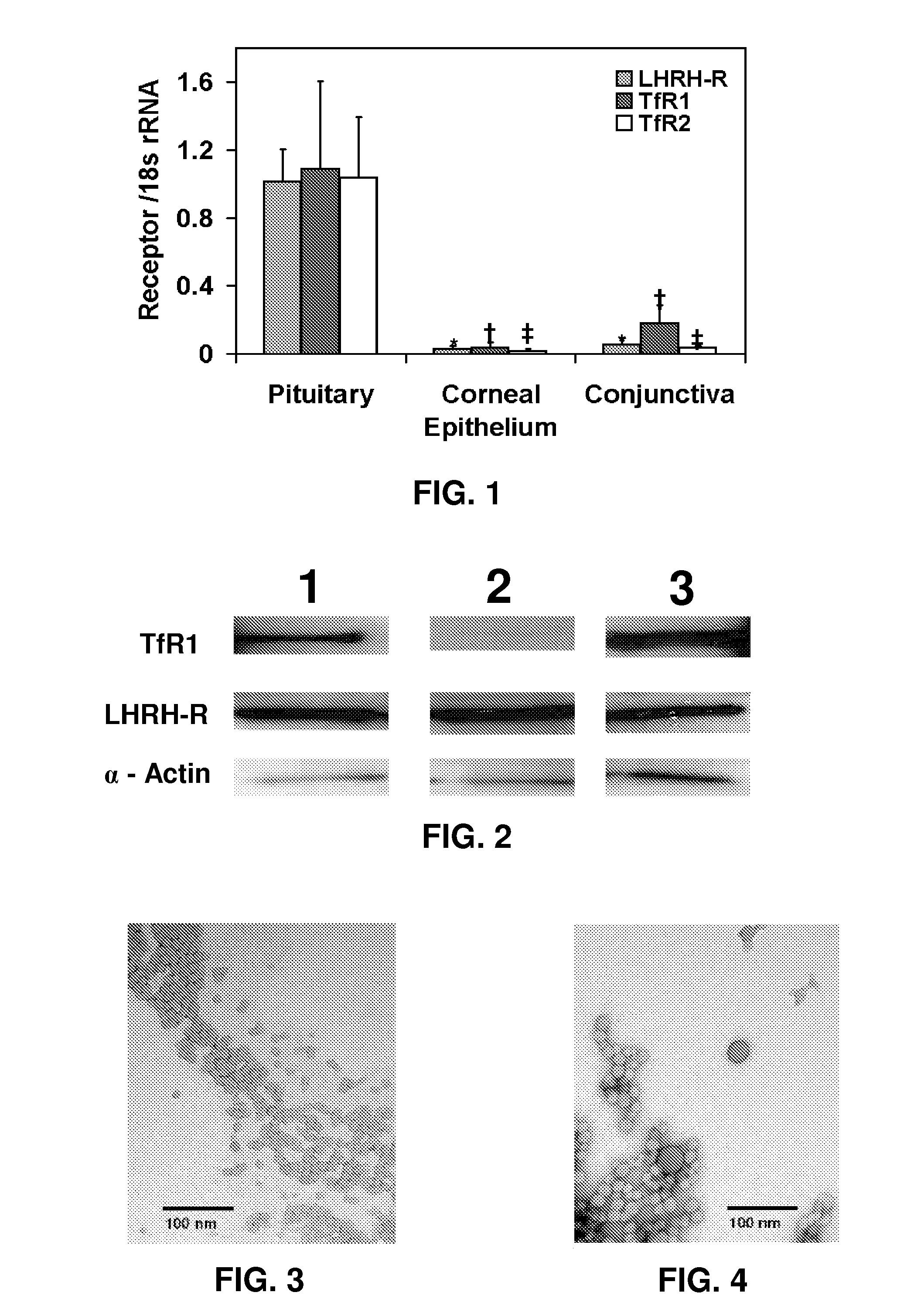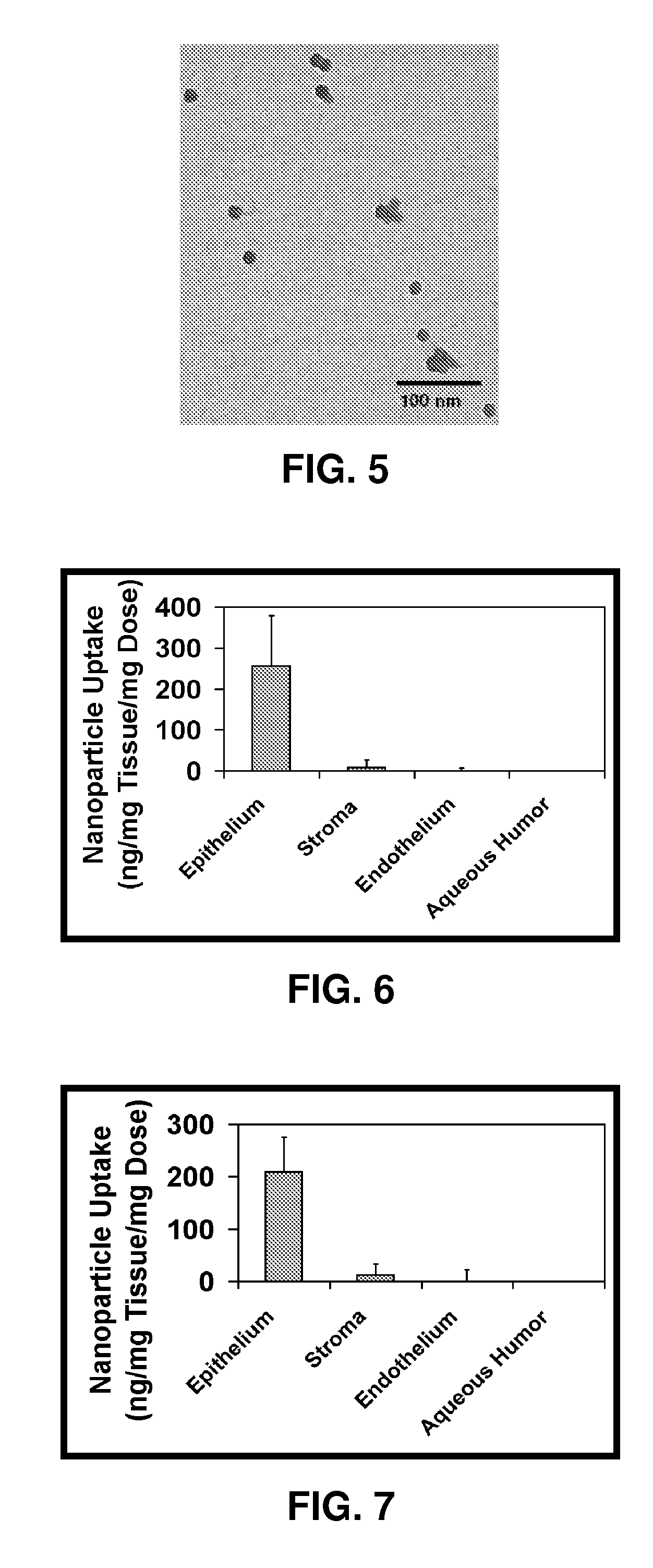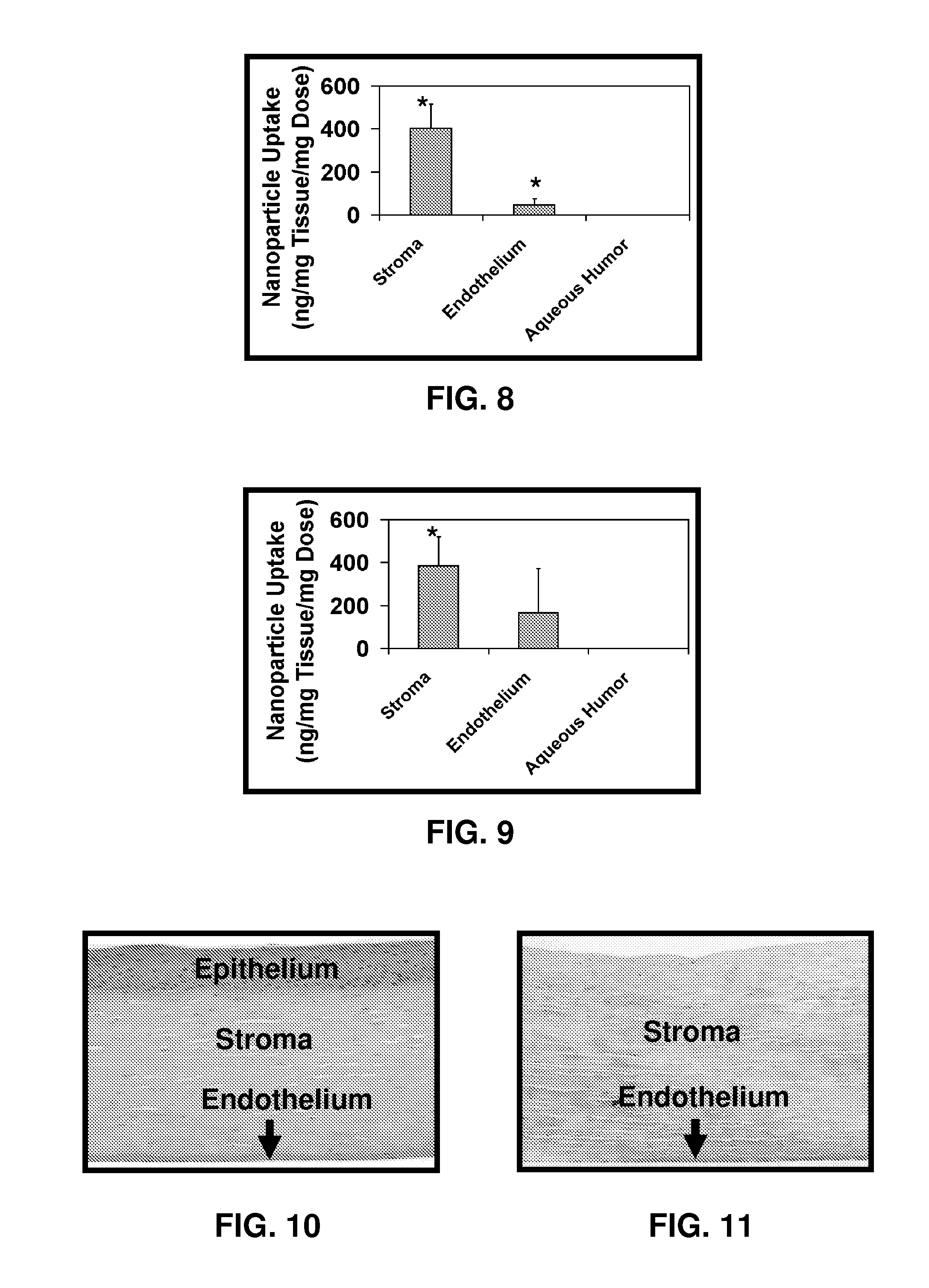Methods and compositions for targeted delivery of therapeutic agents
a therapeutic agent and targeted delivery technology, applied in the field of pathophysiology and disease treatment, can solve the problems of high systemic level, poor absorption and stability of drugs, and ineffective oral delivery for many disorders of the eye, brain and other tissues, and achieve the effect of improving absorption and transport of therapeutic agents
- Summary
- Abstract
- Description
- Claims
- Application Information
AI Technical Summary
Problems solved by technology
Method used
Image
Examples
example 1
Assay for Receptor mRNA Expression in Ocular Tissue
[0116]The expression of LHRH receptor (LHRH-R), transferrin receptor 1 (TfR1) and transferrin receptor 2 (TfR2) mRNA levels were quantified relative to the expression of these receptors in pituitary by real time polymerase chain reaction (real-time PCR). RNA isolation from bovine conjunctiva and corneal epithelium was carried out using RNA STAT-60 RNA isolation kit (TEL-TEST, Friendswood, Tex.). Briefly, freshly excised tissues (pituitary, corneal epithelium, and conjunctiva) were homogenized in 1 ml RNA STAT-60 (TEL-TEST, Friendswood, Tex.) solution followed by extraction with 200 μl of chloroform. The tissue debris, DNA as well as proteins were separated into the organic phase by centrifugation at 12,000 g for 15 min at 4° C. The aqueous phase contained the RNA. Further extraction was carried out with isopropanol (1:1 v / v ratio with the aqueous phase). The RNA was precipitated and separated by centrifugation at 12,000 g for 15 min...
example 2
Western Blot Assay for Receptors in Ocular Tissue
[0120]The expression of LHRH receptor (LHRH-R), transferrin receptor 1 (TfR1) and transferrin receptor 2 (TfR2) in ocular tissue was assayed by Western blot. Homogenates of freshly excised bovine tissues (pituitary, corneal epithelium, and conjunctiva) were prepared as follows. About 200 mg of tissue was homogenized using a Tissue Tearor™ in tissue protein extraction reagent (T-PER, Pierce Biotechnology, Rockford, Ill.). After homogenization, the suspension was centrifuged at 3000 rpm at 4° C. to separate the tissue debris. The supernatant was aliquoted and stored at −80° C. until further use. Total protein content of each of tissue homogenate was estimated using Pierce's BCA kit (Pierce Biotechnology, Rockford, Ill.). Tissue samples (20 μg of protein) were then loaded onto polyacrylamide gels. Molecular weight markers ranging from 220 Da to 14.3 kDa (Amersham Life Science, Arlington Heights, Ill.) were used to identify LHRH receptor,...
example 3
Preparation of Targeted Compositions Using Polystyrene Carrier Particles
[0122]Due to their ease of use, polystyrene particles were used first, although they are not generally desirable for drug delivery because of their poor biodegradability. Fluorescent polystyrene particles (Fluospheres®) of 20 nm size surface modified with either carboxylate or aldehyde sulphate functionalities were purchased from Molecular Probes (Carlsbad, Calif.). Because particles in the nanometer range cannot be detected by bright field light, fluorescent nanoparticles were used so that the fluorescent label could be used to detect the nanoparticles on a cellular surface. Deslorelin, an LHRH agonist, was a gift from Balance Pharmaceuticals, Inc. (Santa Monica, Calif.). Transferrin, propidium iodide and the chemicals required for making buffer solutions were purchased from Sigma-Aldrich (St. Louis, Mo.).
[0123]Targeting moieties for both LHRH and transferrin receptors were attached to the carrier particles by ...
PUM
| Property | Measurement | Unit |
|---|---|---|
| absorptive surface area | aaaaa | aaaaa |
| absorptive surface area | aaaaa | aaaaa |
| molecular weight | aaaaa | aaaaa |
Abstract
Description
Claims
Application Information
 Login to View More
Login to View More - R&D
- Intellectual Property
- Life Sciences
- Materials
- Tech Scout
- Unparalleled Data Quality
- Higher Quality Content
- 60% Fewer Hallucinations
Browse by: Latest US Patents, China's latest patents, Technical Efficacy Thesaurus, Application Domain, Technology Topic, Popular Technical Reports.
© 2025 PatSnap. All rights reserved.Legal|Privacy policy|Modern Slavery Act Transparency Statement|Sitemap|About US| Contact US: help@patsnap.com



